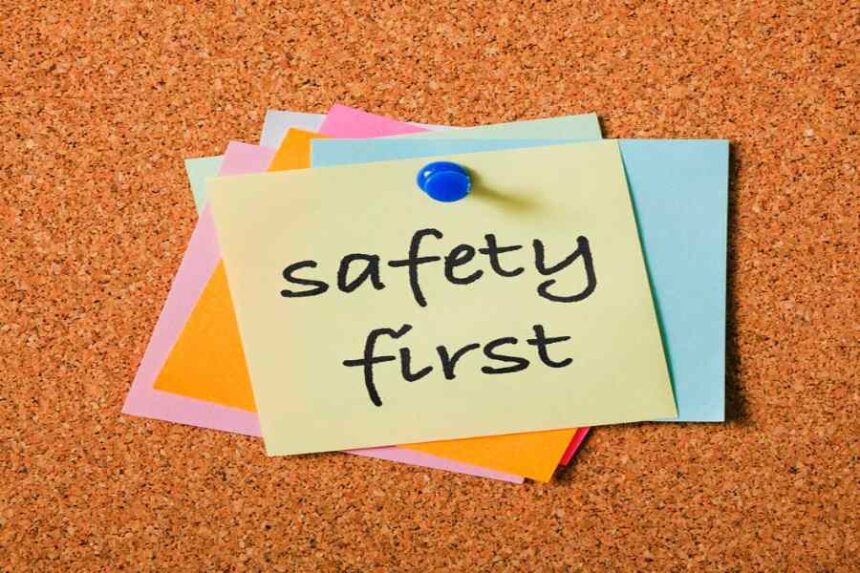Why does a safety plan matter? This is a common question among remote teams, and the idea of workplace safety has expanded far beyond physical hazards to include cyber vulnerabilities, liability risks, and operational disruptions, particularly for remote teams who operate in distributed environments where oversight can be challenging and vulnerabilities can often be overlooked until they are exploited. A well-structured safety plan not only mitigates threats but also builds a culture of accountability and preparedness, fostering trust and reliability among employees, clients, and stakeholders.
Whether addressing potential data breaches or enhancing emergency preparedness, a comprehensive safety strategy is no longer an option but a necessity for businesses seeking long-term growth and operational continuity.
Identifying Key Risks
-
Map Out Hazards:
Before drafting any safety measures, businesses must assess workplace risks by evaluating both physical and digital vulnerabilities, particularly for remote teams where home office setups might lack the safeguards typically found in corporate environments. Employees may be working with unsecured Wi-Fi networks, outdated firewalls, or weak passwords, making them susceptible to cyberattacks. Beyond cybersecurity, companies should also assess ergonomic risks, fire hazards, and even environmental disruptions that could impact productivity and safety.
-
Learn from the Past:
Looking at prior incidents, whether they involve phishing attempts, ransomware attacks, or even internal miscommunications that resulted in lost data, provides invaluable insights into vulnerabilities that need immediate attention. Examining near-miss reports can reveal patterns and gaps in preparedness, helping companies refine their approach and avoid repeating past mistakes.
-
Collaborate for Insights:
Effective risk assessment cannot happen in isolation, which is why involving employees in safety planning is critical to identifying issues that management might overlook. Remote teams, in particular, may face unique challenges like time zone differences and connectivity issues, so gathering their feedback helps uncover hidden risks while also empowering employees to take ownership of their safety.
Establishing Protocols for Cybersecurity
-
Set Clear Rules:
To maintain a secure working environment, organizations must develop clear and enforceable guidelines for device management, password security, and software updates, including instructions for using VPNs, encrypting sensitive data, and restricting access based on user roles to ensure data remains secure even when employees work from multiple locations. Protocols should also address the use of personal devices, which are often less secure than company-issued equipment but are increasingly common among remote teams.
-
Train and Test:
Cybersecurity training should never be treated as a one-off session but rather as an ongoing process involving periodic refreshers, mock phishing drills, and real-world scenarios that teach employees to recognize and respond to potential threats. Reinforcing concepts such as multi-factor authentication and secure file-sharing methods not only enhances technical preparedness but also encourages employees to prioritize security in their daily workflows.
-
Conduct Audits:
Businesses cannot afford to operate on assumptions, which is why regular security audits and inspections are essential to enforce compliance, identify weak spots, and adapt to emerging threats. Leveraging tools that automate network monitoring and vulnerability assessments helps reduce oversight gaps without creating additional administrative burdens, allowing companies to maintain security without disrupting productivity.
Preparing for Emergencies
-
Develop a Response Plan:
Preparedness begins with a detailed emergency response framework outlining steps to handle situations ranging from cyberattacks to natural disasters, specifying clear roles and responsibilities for team members so that no time is wasted in delegating tasks during critical moments. Remote teams, in particular, need protocols tailored to virtual environments where physical proximity cannot be relied upon to coordinate efforts.
-
Practice Makes Perfect:
Running drills and simulations for potential emergencies ensures that teams respond effectively under pressure, whether it involves isolating compromised systems during a ransomware attack or setting up backup communication channels during an internet outage. Practicing these scenarios not only builds confidence but also exposes procedural weaknesses that can be corrected before real incidents occur.
-
Equip the Team:
Employees should have access to critical resources such as updated contact lists, encrypted communication tools, and immediate tech support, along with first-aid training and disaster recovery kits for physical emergencies, ensuring they can act quickly without waiting for instructions that may not arrive in time.
Communication and Reporting Structures
Encouraging transparency and accountability plays a major role in ensuring the effectiveness of safety plans, particularly when employees are geographically dispersed and may hesitate to report concerns due to fears of being perceived as alarmist. To eliminate such barriers, businesses should introduce anonymous reporting systems for cybersecurity vulnerabilities, suspicious activities, and compliance lapses, ensuring employees feel safe sharing concerns without fear of repercussions. Regular updates and reminders about safety protocols keep these policies fresh in employees’ minds, while collaboration platforms streamline reporting processes, reducing friction and improving adoption rates across teams.
Continuous Review and Coverage
The digital and physical threat landscape is constantly evolving, which means safety plans cannot be static documents but must be living frameworks that adapt to new challenges and technologies. Organizations should schedule quarterly reviews to evaluate whether insurance policies, liability coverage, and safety measures remain adequate, incorporating employee feedback into revisions to ensure policies reflect real-world usage rather than theoretical assumptions. Staying informed about evolving regulations, compliance requirements, and industry best practices ensures that all protocols remain relevant and effective, minimizing risk exposure over time and creating a positive workspace.
Leveraging Technology Trends
Modern safety planning is no longer confined to paper-based checklists and manual enforcement—it now incorporates AI-powered monitoring tools, endpoint protection software, and machine-learning algorithms that can identify anomalies before they escalate into full-blown crises. Smart technologies allow businesses to automate updates, track compliance, and flag vulnerabilities without human intervention, freeing up resources to focus on more strategic initiatives. Employees should be trained to integrate these tools seamlessly into their daily workflows, making safety an organic part of operations rather than an afterthought.
Final Thoughts
A forward-thinking safety plan does more than protect assets—it fosters a culture of resilience, preparedness, and trust that resonates across every layer of an organization, from executives to entry-level employees. Businesses that invest in clear protocols, ongoing training, and cutting-edge technologies are better positioned to navigate disruptions without compromising productivity or credibility. As remote work continues to redefine modern workplaces, integrating flexible yet robust safety strategies will be the hallmark of organizations that not only survive but thrive in an increasingly unpredictable environment




